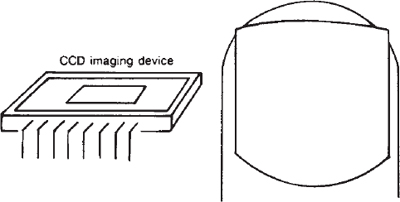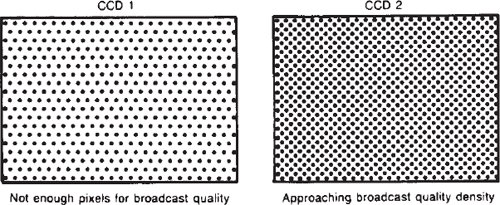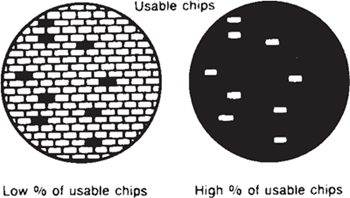CCDs are the heart of the camera.
Charge-Coupled Devices
Charge-coupled devices (CCDs) are the parts inside of the camera that change the light focused on them by the camera lens into electrical signals. CCDs have been developed from the same sort of solid-state silicon chip technology that has made computers faster, smaller, more powerful, and cheaper; put powerful radios into small packages; and made home camcorders the size of a book.
CCD Layout and Operation
These chips are laid out with rows of photosensitive elements; these are our picture elements (pixels). The number of pixels on a CCD is defined by its matrix. For example, a matrix of 704 x 480 would indicate that there are 704 pixels placed across the screen horizontally in each of 480 vertical rows. This would give a total of 337,920 pixels in the picture. When light hits one of these pixels, a distinct electrical voltage is created. The brighter the light, the higher the voltage; the darker the light, the lower the voltage. All of these discrete voltages are read off left to right and top to bottom into a memory. The memory is then fed out, horizontal line by horizontal line, in sync with the rest of the system. Once the face of the CCD has been cleared, a new image forms and the process is repeated.
Broadcast-Quality Requirements
To meet broadcast-quality standards, a CCD needs to have a minimum of 330,000 pixels. Since having more pixels gives higher detail and resolution, it would be nice to have even more than that. Cramming that many pixels into an area a little larger than your thumbnail has been a major problem. It took engineers more than 10 years to solve the problems, but they have been very successful and CCD cameras are now the standard of the industry.
1. CCD next to a thumb; the scale is roughly accurate.
2. CCD layout. This diagram shows horizontal and vertical layout of a CCD. Each dot represents a distinct picture element.
3. Broadcast-quality CCDs need a high pixel density.
4. In the past, CCDs were expensive because each batch produced only a small number of usable chips.




